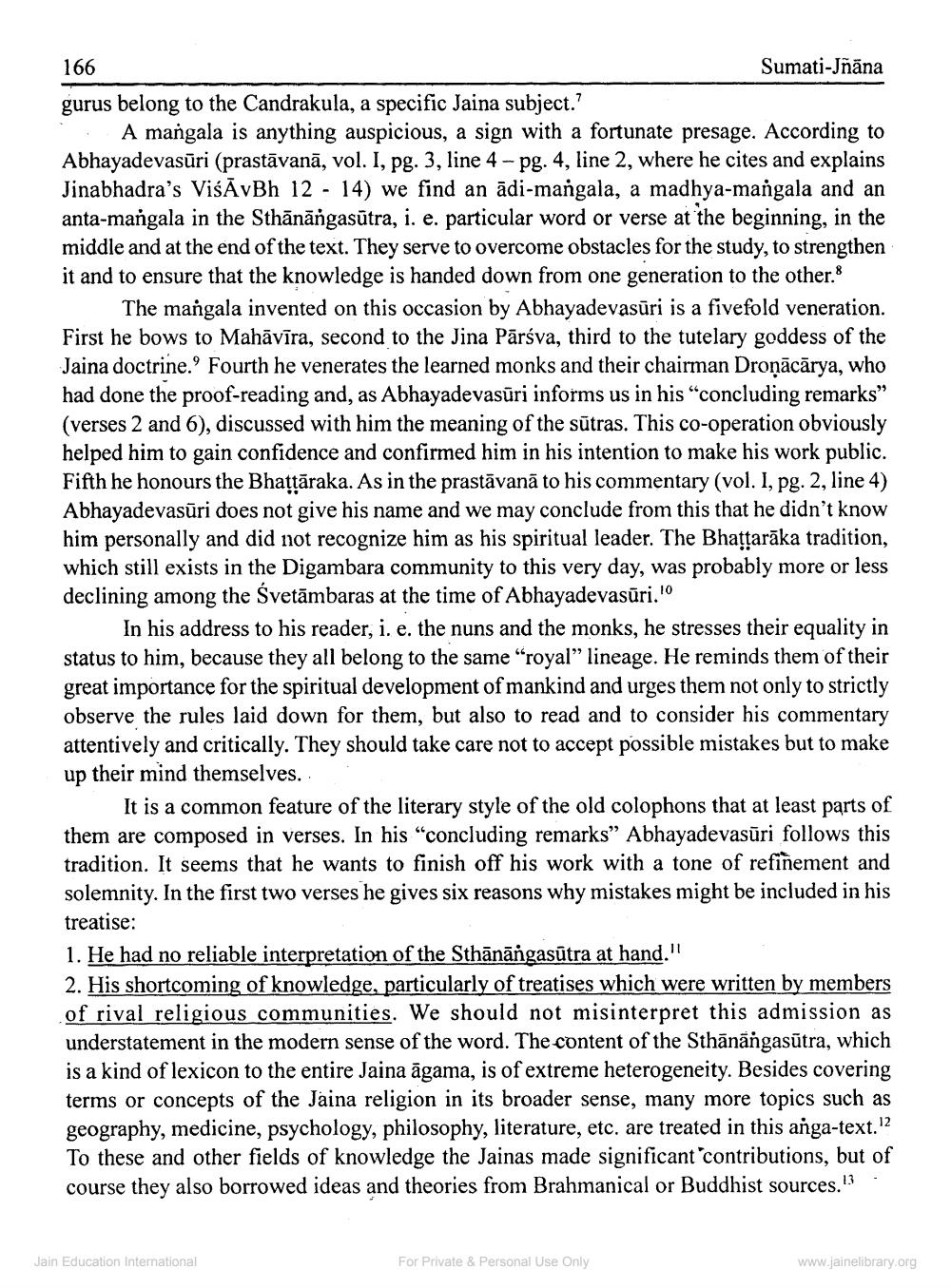________________
166
gurus belong to the Candrakula, a specific Jaina subject.'
A mangala is anything auspicious, a sign with a fortunate presage. According to Abhayadevasūri (prastāvanā, vol. I, pg. 3, line 4 - pg. 4, line 2, where he cites and explains Jinabhadra's ViśĀvBh 12 - 14) we find an ādi-mangala, a madhya-mangala and an anta-mangala in the Sthānāngasūtra, i. e. particular word or verse at the beginning, in the middle and at the end of the text. They serve to overcome obstacles for the study, to strengthen it and to ensure that the knowledge is handed down from one generation to the other.
Sumati-Jñāna
The mangala invented on this occasion by Abhayadevasūri is a fivefold veneration. First he bows to Mahāvīra, second to the Jina Pārśva, third to the tutelary goddess of the Jaina doctrine. Fourth he venerates the learned monks and their chairman Droṇācārya, who had done the proof-reading and, as Abhayadevasūri informs us in his "concluding remarks" (verses 2 and 6), discussed with him the meaning of the sutras. This co-operation obviously helped him to gain confidence and confirmed him in his intention to make his work public. Fifth he honours the Bhaṭṭāraka. As in the prastāvanā to his commentary (vol. I, pg. 2, line 4) Abhayadevasuri does not give his name and we may conclude from this that he didn't know him personally and did not recognize him as his spiritual leader. The Bhaṭṭarāka tradition, which still exists in the Digambara community to this very day, was probably more or less declining among the Svetambaras at the time of Abhayadevasūri.'"
In his address to his reader, i. e. the nuns and the monks, he stresses their equality in status to him, because they all belong to the same "royal" lineage. He reminds them of their great importance for the spiritual development of mankind and urges them not only to strictly observe the rules laid down for them, but also to read and to consider his commentary attentively and critically. They should take care not to accept possible mistakes but to make up their mind themselves..
It is a common feature of the literary style of the old colophons that at least parts of them are composed in verses. In his "concluding remarks" Abhayadevasūri follows this tradition. It seems that he wants to finish off his work with a tone of refinement and solemnity. In the first two verses he gives six reasons why mistakes might be included in his treatise:
1. He had no reliable interpretation of the Sthānāṁgasūtra at hand."
2. His shortcoming of knowledge, particularly of treatises which were written by members of rival religious communities. We should not misinterpret this admission as understatement in the modern sense of the word. The content of the Sthānangasūtra, which is a kind of lexicon to the entire Jaina agama, is of extreme heterogeneity. Besides covering terms or concepts of the Jaina religion in its broader sense, many more topics such as geography, medicine, psychology, philosophy, literature, etc. are treated in this anga-text.12 To these and other fields of knowledge the Jainas made significant contributions, but of course they also borrowed ideas and theories from Brahmanical or Buddhist sources.13
Jain Education International
For Private & Personal Use Only
www.jainelibrary.org




